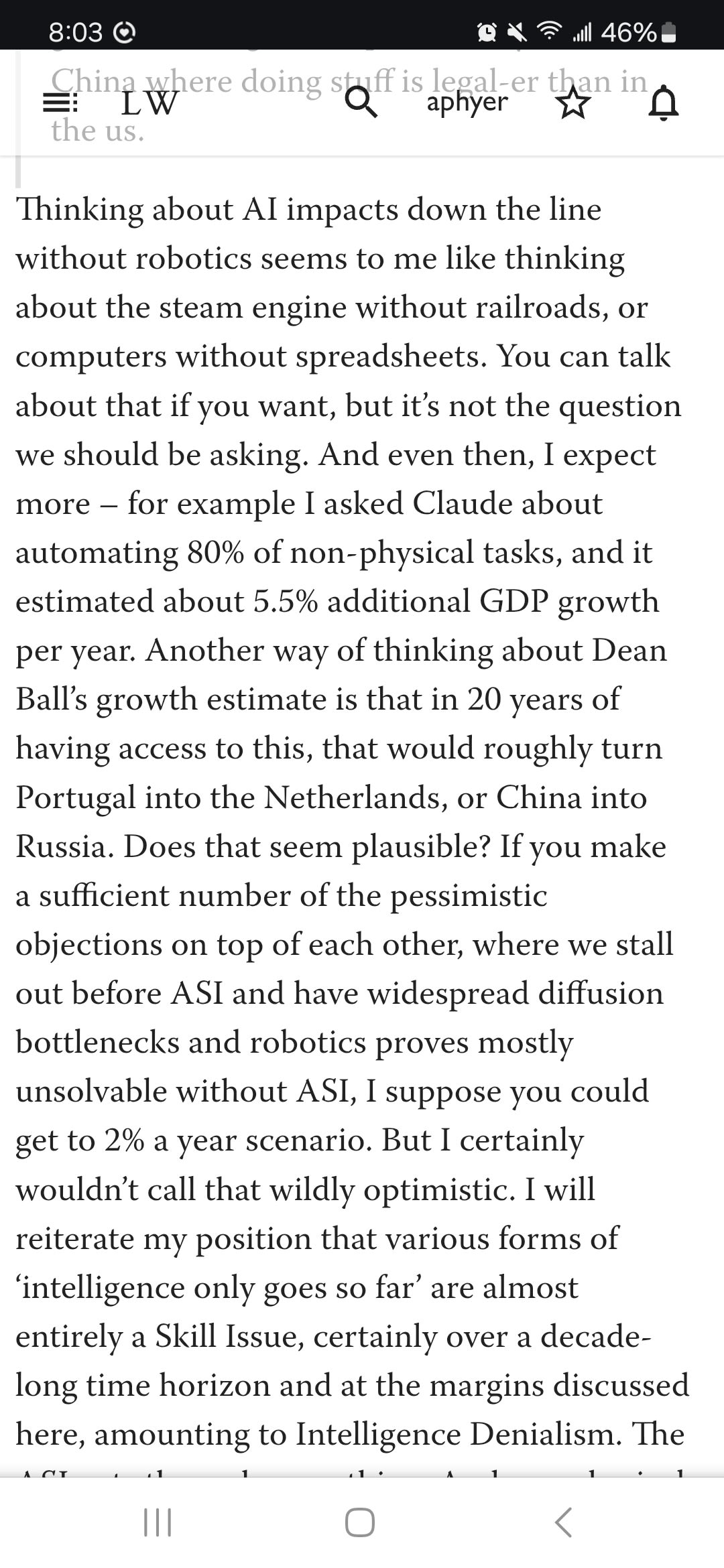I am Andrew Hyer, currently living in New Jersey and working in New York (in the finance industry).
Posts
Wikitag Contributions
Even if you accept that insects have value, helping insects right now is still quite questionable because it's a form of charity with zero long-term knock-on effects.
...to my confusion, not only do both of those look fine to me on mobile, the original post now also looks fine.
(Yes, I am on Android.)
On mobile I see no paragraph breaks, on PC I see them.
Edited to add what it looks like on mobile:

If there's less abuse happening in homeschooling than in regular schooling, a policy of "let's impose burdens on homeschooling to crack down on abuse in homeschooling" without a similar crackdown on abuse in non-home-schooling does not decrease abuse.
You can see something similar with self-driving cars. It is bad if a self-driving car crashes. It would be good to do things that reduce that. But if you get to a point where self-driving cars are safer than regular driving, and you continue to crack down on self-driving cars but not on regular driving, this is not good for safety overall.
Apropos of nothing in particular, do you think that abolishing the Dept. of Education would make things go better or worse?
Buying time for technical progress in alignment...to be made where, and by who?
Mostly fair, but tiers did have a slight other impact in that they were used to bias the final room: Clay Golem and Hag were equally more-likely to be in the final room, both less so than Dragon and Steel Golem but more so than Orcs and Boulder Trap.
Yes, that's a sneaky part of the scenario. In general, I think this is a realistic thing to occur: 'other intelligent people optimizing around this data' is one of the things that causes the most complicated things to happen in real-world data as well.
Christian Z R had a very good comment on this, where they mentioned looking at the subset of dungeons where Rooms 2 and 4 had the same encounter, or where Rooms 6 and 8 had the same encounter, to factor out the impact of intelligence and guarantee 'they will encounter this specific thing'.
(Edited to add: actually, there are ~100 rows in the dataset where Room2=4, Room6=8, and Room3=5=7. This isn't enough to get firm analysis on, but it could have served as a very strong sanity-check opportunity where you can look at a few dungeons where you know exactly what the route is.)
I think puzzling out the premise could have been a lot more fun if we hadn't known the entry and exit squares going in
I think this would have messed up the difficulty curve a bit: telling players 'here is the entrance and exit' is part of what lets 'stick a tough encounter at the entrance/exit' be a simple strategy.
The writing was as fun and funny as usual - if not more so! - but seemed less . . . pointed?/ambitious?/thematically-coherent? than I've come to expect.
This is absolutely true though I'm surprised it's obvious: my originally-planned scenario didn't quite work out as intended (I'm still trying to assemble mechanics for it that actually work the way I want them to) and this was my backup scenario.
imo a 4x4 or 5x5 dungeon would probably have been easier than the 3x3, especially for reliably distinguishing between hypotheses A and B
Interesting. I trimmed it down to 3x3 as part of Plan 'Try Not To Make Everything Too Overcomplicated', trying to use the smallest dungeon that would still make pathing relevant in order to avoid dropping 16 separate encounters on players.
There was one aspect about which I have unreservedly positive feelings: the chrono effects, the hag poem and the varying numbers of adventurers were all excellent red herrings, seeming like they might hint towards subtle opportunities for performance improvement (and/or a secret Bonus Bonus Objective) but being quickly dismissable as fingertraps.
This...is not really quite how those were intended. The intent was something more along the lines of 'Easter Eggs'.
To get the virtue of the Void you need to turn off the gacha game and go touch grass. If you fail to achieve that, it is futile to protest that you acted with propriety.